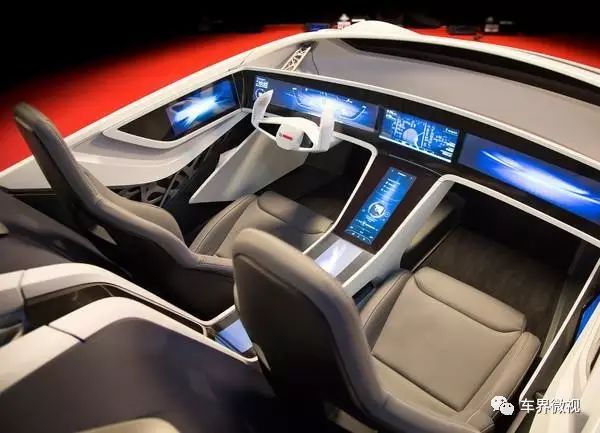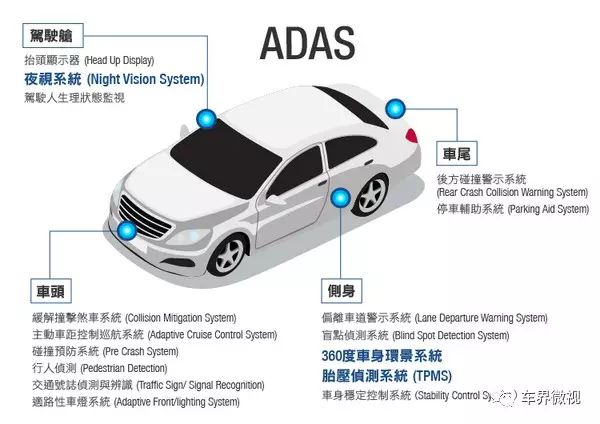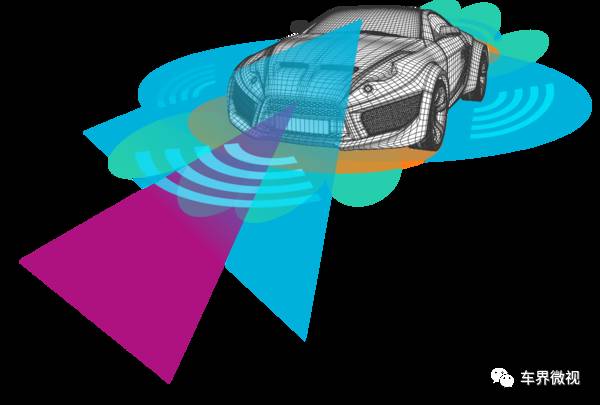“How convenient would it be if this car could automatically brake!” “I crashed into the wall again while reversing!” “My foot is about to break from driving on the highway,” we often heard many such complaints and frustrations years ago.
What about today? There are still many complaints and frustrations, but the content has changed, “Can this car with ACC (Adaptive Cruise Control) be a bit cheaper?” “This automatic parking feature is really good, but it’s a bit expensive.” “This car can follow and avoid obstacles, it’s really (you) awesome (qian) (ren).”

Demand drives motivation; now car configurations are increasingly advanced. As is well known, compared to car prices a few years ago, consumers can buy unexpectedly advanced configurations at the same or even lower prices, which is the benefit brought by technological progress. However, many people only see the high-tech features of cars constantly being updated, but they do not notice the rise of the ADAS market.

For many people, ADAS is both unfamiliar and familiar! Many people have not heard of ADAS. To put it academically, ADAS stands for “Advanced Driver Assistance System,” which uses various sensors installed in the car to sense the surrounding environment while the car is driving, collecting data, and performing systematic calculations and analyses to alert the driver of potential dangers, effectively increasing driving comfort and safety. Early ADAS technology mainly relied on passive alerts, while the latest ADAS technology increasingly features active intervention.
In simple terms, today’s ADAS technology collects various dynamic information about the vehicle and its surroundings and processes it to provide early warnings of dangers and actively control the car if the driver fails to respond in time. Why do I say it’s familiar? Car buyers definitely look at the technological configurations of the car when purchasing, such as ACC (Adaptive Cruise Control), LDWS (Lane Departure Warning System), automatic parking, etc., which have become familiar to many, as these systems are increasingly being equipped in cars priced around 300,000.

At this point, I must mention the significance of the development of the ADAS market, or why the ADAS market is developing so rapidly. Let’s take the active obstacle avoidance assistance driving system in ADAS as an example. A study released by the Virginia Tech Transportation Institute and NHTSA indicates that 95% of traffic accidents are caused by driver error. The survey shows that if drivers focus and take the correct actions three seconds before an accident, 80% of traffic accidents can be avoided. The Insurance Institute for Highway Safety believes that equipping cars with basic intelligent assistance systems can prevent over 60% of traffic accidents. According to Volkswagen’s survey results, in severe accidents, 85% of drivers did not apply the brakes or did not apply them fully, leading to traffic accidents.

If it could provide early warning to drivers about potential dangers before an accident occurs and assist drivers in automatically applying brakes and other safety measures in emergencies, it would be very useful in reducing the likelihood of traffic accidents. Thus, the active obstacle avoidance assistance driving system in ADAS has emerged, intervening in the car’s braking system before a danger occurs, when the driver has no time to react or does not react at all, maintaining a safe distance from the vehicle in front. Moreover, with continuous development and improvement, the active obstacle avoidance system can adapt not only to high-speed conditions but also to urban conditions, significantly reducing the incidence of rear-end collisions.

What if there were no ADAS? The high incidence of accidents would lead to significant unavoidable losses, which is a problem that the whole world is worried about and desperately trying to solve. Therefore, active control has become an inevitable trend, and autonomous driving is bound to become the main driving mode of a better future, while ADAS is essential for autonomous driving, serving as a prerequisite. Without these active assistance driving systems, autonomous driving would only remain a hypothetical concept.

Regarding the development of the domestic ADAS market, I would like to share my two views.
1 Independently develop ADAS technology and seize the initiative
Major domestic car companies are continuously researching autonomous vehicles, but there is still a long way to go before full realization. However, the rapid development of the ADAS market presents a significant opportunity for many car companies to promote their own brands and capture market share. After all, most ADAS technologies are equipped in vehicles priced around 300,000, and most of these models are imported or joint venture cars. For example, automatic parking technology is still a hallmark of major brands like Mercedes and BMW, meaning the initiative is not in their hands. If they can independently develop ADAS technology and invest in their own brands, domestic brands will surely have a strong advantage in price and quality.

2 Independently innovate ADAS technology to meet domestic needs
Independently developing ADAS technology aims to seize the initiative in ADAS technology, gaining an advantage in cost-effectiveness, while independently innovating ADAS technology aims to meet the needs of domestic consumers. There are significant differences between domestic and foreign traffic systems and cultures; creating ADAS technology suitable for domestic consumer needs is crucial to winning their favor. For instance, the red-light violation braking control system may not seem complex, but it would be very applicable for many domestic consumers.

If there were no ADAS, what would the world be like? I think this question is already obvious. For cars to progress, technology is paramount, and the advancement of ADAS is a strong proof of the progress of automotive technology. Demand is also a driving force, and we look forward to the ADAS market developing faster and better!


 airbags – safety devices can also “kill”
airbags – safety devices can also “kill”
What is hindering you from driving out?
Are Japanese cars losing market share to Honda year after year?